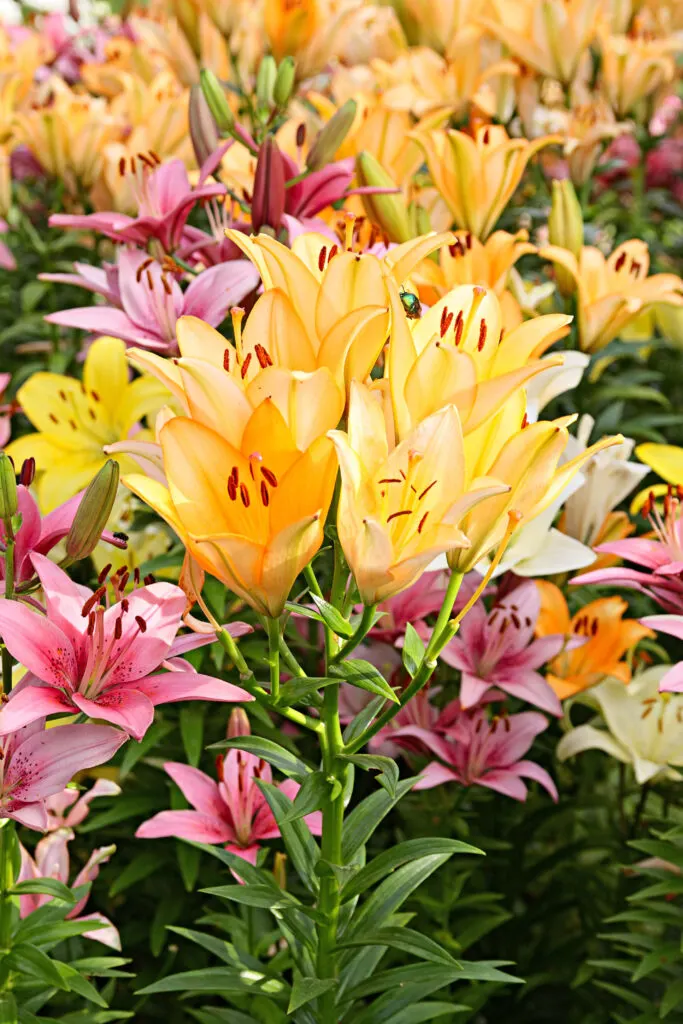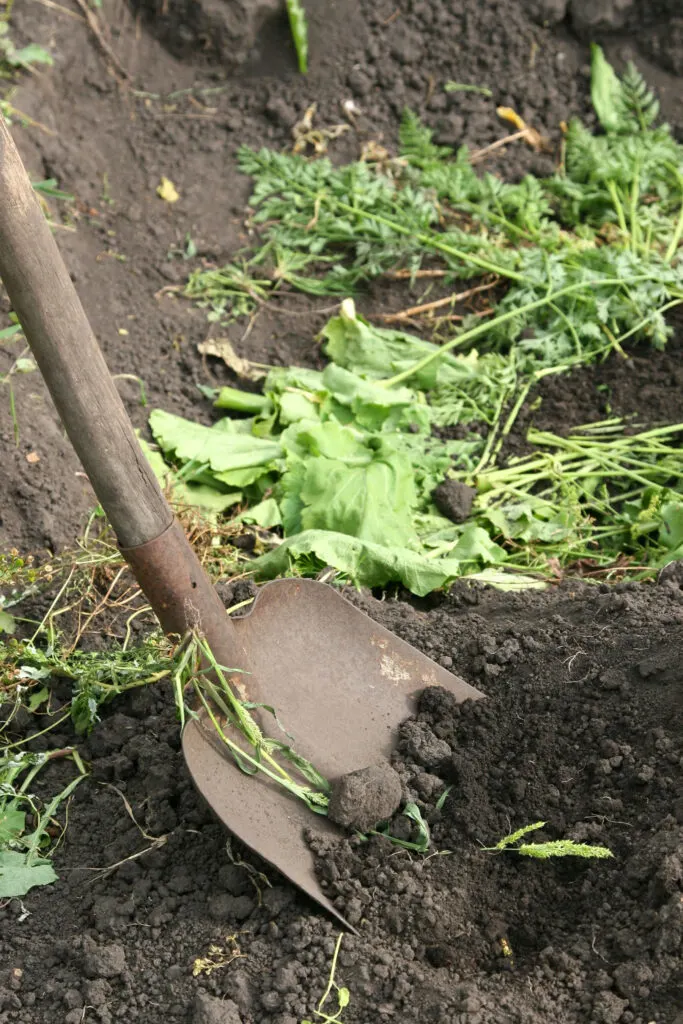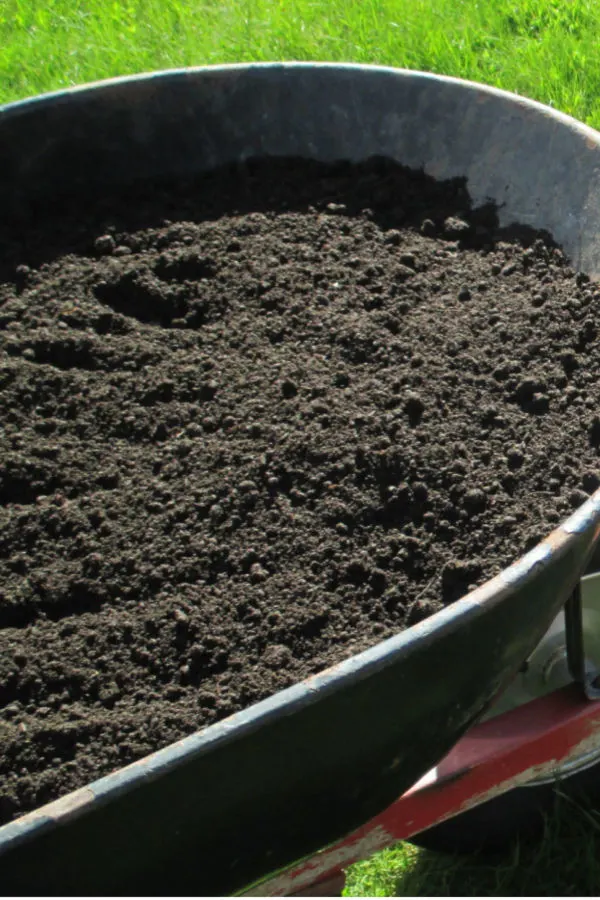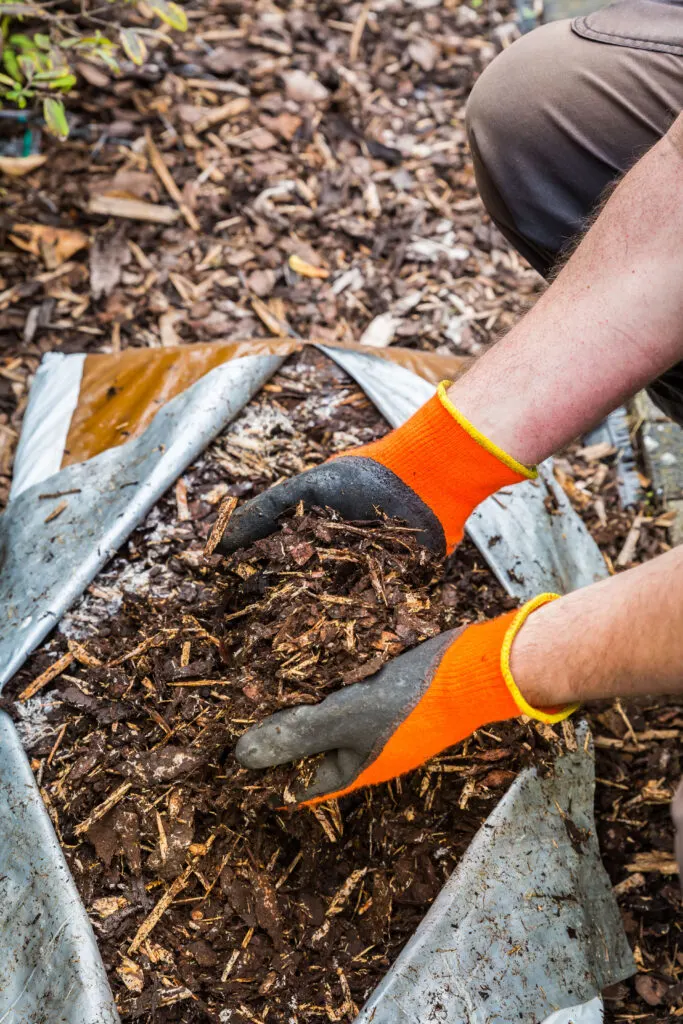It’s true – one of the best ways to eliminate weeds and grow healthier plants in your flowerbeds is by simply avoiding 3 of the biggest and most common flowerbed mulching mistakes made by home gardeners each and every year!
When it comes to maintaining healthy plants and weed-free flowerbeds, mulch is the answer. There is little doubt that it has tremendous benefits for the flowers growing in your flowerbeds.
For starters, mulch helps to regulate soil temperature, keeping the roots of plants from getting too warm or too cold. It also helps to retain moisture for the roots of plants, keeping them properly hydrated through the hottest days of summer.

But let’s face it, the number one reason gardeners put down mulch is to stop weeds! And unfortunately, for many who go through the expense and effort of mulching their beds each year in hopes to finally put an end to their weeding chores – their mulching process actually only helps their weed problems multiply!
With that in mind, here is a look at the three most common miscues gardeners make when mulching, and how to avoid them this year for weed free and care free flowerbeds!
The 3 Biggest Flowerbed Mulching Mistakes
#1 Not Eliminating Existing Weeds
It’s a plain and simple fact – if you don’t eliminate the weeds that already exist in your flowerbeds, they are going to come back. Simply trimming the weeds down to the soil line, or even worse, mulching over top of them in the early spring will not kill them. In fact, it will only make them stronger.
Remember all of those benefits listed above that mulching can do for your flowers? Those benefits also help existing weeds grow stronger too! The weeds will simply re-emerge through the mulch, even when mulch is applied thickly.
Mulch can be expensive. And the time it can take to mulch is time consuming as well. And that is exactly why it is more important than ever to take the time to do it right from the start!

Before mulching, start by removing the weeds already present. But do so carefully. Many gardeners rake out their beds or even turn the soil, weeds and existing mulch over with a shovel. All this will do is replant hundreds if not thousands of weeds seeds that were laying dormant on top. Even worse, the weeds you turn over will come back too.
Instead, remove weeds by digging only the weed out and not a large shovel full of soil. Weed forks are great for this! Not only do they get down into the soil to remove the entire root, they do so without disturbing the soil. Product Affiliate Link : 12″ Hand Weeding Fork
#2 Using The Wrong Mulch – The 3 Biggest Flowerbed Mulching Mistakes
The mulch you choose to use in your flowerbeds does make a huge difference in how well you will be able to keep weeds out. In addition, it can also plays a huge role in the fertility of your soil – and in how well your plants will grow.
First of all, when mulching annuals, perennials and even most shrubs, bushes and trees – it is best to avoid stone, synthetic rubber and other non-nutrient filled mulches. Not only do they not help build soil strength and vitality – they can even harm your plants – especially stone!
Let’s first cover stone. Many gardeners like stone because it is permanent. It’s true it won’t break down, but it is a bad choice for most flowerbeds. Especially ones where annual flowers, perennial plants and hydrangea, viburnum and other similar bushes grow.
Listen To Our Podcast Below On How To Keep Your Flowerbeds Weed Free All Season Long!
Why is stone a bad choice? For starters, stone heats up quickly, especially when the sun beats down on it. As it does, it also heats the soil temperature below. That can not only dry out the soil more quickly, it can also injure the roots of more tender perennials and annuals.
In addition, the stone also doesn’t break down at all, so the soil below has no chance to gain nutrients from it. The same goes for synthetic mulches like the rubber mulches you can now find. They too heat up, and they also give no energy back to the soil.
The Best Mulch For Flowerbeds – The 3 Biggest Flowerbed Mulching Mistakes
To eliminate weeds, mulch needs to form a barrier between the surface and the soil. When it does, it keeps weed seeds from finding a way to the soil to sprout. On the surface of the mulch, weed seeds are harmless. They can’t germinate. Nor can they create more seeds or big roots.
So what is the best mulch? To both keep weeds out and add nutrients back to the soil, shredded hardwood or hardwood bulk is the best choice of all. But, and this is key – not too finely shredded!

Triple shredded or superfine mulch is so refined that it acts more like soil than a mulch. That means weed seeds can easily work their way to the surface – or even sometimes germinate in the soil-like mulch. Even worse, superfine mulch breaks down so quickly into the soil, it can cost a fortune to keep replacing it!
Single shred or double shred is the way to go. Both of these will form a great barrier, and slowly break down over time to add nutrients. Pine bark and shredded pine mulches are okay to use, but will not add the same nutrient levels that hardwood will.
Cypress mulch adds even less, and tangles together so much that it can keep water and nutrients from getting down to the soil and roots of your plants. Now on to the third and final of the biggest mistakes many gardeners make when mulching – mulching way too thin!
#3 Not Mulching Deep Enough – The 3 Biggest Flowerbed Mulching Mistakes
Plain and simple, if you don’t put your mulch on thick enough, you won’t help your plants – and you certainly won’t stop weeds!
To be effective, mulch needs to be a minimum of four inches thick. Six inches thick is best of all. This is enough to stop weed seeds from finding a home below, and also deep enough to help conserve moisture for plants and regulate soil temperature.

When mulching, apply a four to six inch layer in your beds. And whatever you do, if you have mulch already present, don’t stir it up or rake it around. This will only help any weeds seeds that might be there find a way to the soil below. Instead, clear your beds of existing weeds, disturbing the soil as little as possible – and mulch right on top.
This advice is good for topping off mulch throughout the season as well. Many gardeners like to rake or stir up their mulch to “freshen” up the look. This simple act also allows weed seeds that were laying dormant on top to work down to the soil level.
Instead, simply freshen up your beds with a bit of new mulch on top and call it a day. It’s far less work – and it will keep your beds more weed free than ever this year.
Last but not least, fill your flowerbeds with more flowers than mulch! The more plants you have, the less open spaces there are for plants to grow. And – the less mulch you will have to use! See: How To Divide Daylilies In The Spring – Create More Plants For Free!
Follow Our Facebook Page For Great Gardening Tips And Advice! This Is My Garden Facebook Page
This Is My Garden is a garden website created by gardeners, for gardeners. Jim and Mary Competti have been writing gardening, DIY and recipe articles and books and speaking for over 15 years from their 46 acre Ohio farm. They publish three articles every week, 52 weeks a year. Sign up today to follow via email, or follow along!
